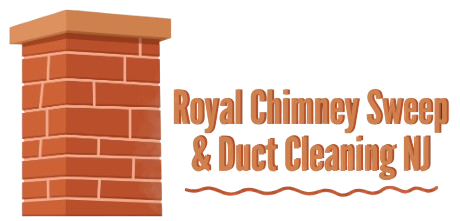Comparing chimney service providers in New Jersey can feel overwhelming. With many companies promising fast appointments and spotless results, how do you separate marketing from meaningful value? The answer is to compare the details that actually affect your home: safety protocols, documentation quality, technical depth, communication, and local experience. Instead of focusing on numbers, this guide shows how to evaluate what truly matters so you can choose with confidence. As you weigh options, remember that professional chimney cleaning should be thorough, respectful of your space, and backed by clear photos and explanations.
Build a comparison framework
Create a simple scoring sheet that lists the criteria you value. Assign weight to each item based on importance to your household.
- Safety practices: Laddering, fall protection, and weather policies for roof work.
- Containment and cleanliness: Drop cloths, sealed work zones, and HEPA filtration.
- Technical approach: Appliance-specific tooling and method selection based on liner material and residue type.
- Inspection and reporting: Photos, annotated findings, and clear recommendations.
- Communication: Responsiveness, punctuality, and clarity about what the appointment includes.
- Local expertise: Familiarity with NJ rooflines, weather patterns, and common cap or flashing issues.
Evaluate scope, not slogans
The best comparisons go beyond slogans like “fast” or “friendly.” Ask each provider to describe the step-by-step process for your specific setup—masonry fireplace, insert, stove, pellet unit, or gas appliance. Their answers should reflect a tailored method, including when they choose top-down or bottom-up brushing, how they protect the room, and what documentation you will receive. Specifics signal competence.
Documentation as a decision-maker
Photos and written notes are the most reliable way to verify what was found and addressed. Ask for sample reports with personal information removed. Look for:
- Clear images of the cap, crown or chase cover, flashing, and termination.
- Interior liner, joints, and smoke chamber condition with annotations.
- Before-and-after images showing the work performed.
- Plain-language summaries explaining what to monitor and when to schedule again.
Reading reviews with insight
Reviews can be helpful if you read them critically:
- Look for patterns: repeated praise for cleanliness, communication, or thoroughness carries weight.
- Check for details: Reviews that mention HEPA vacuums, careful laddering, or photo reports indicate a real, high-quality experience.
- Consider context: A complaint about rescheduling during high winds may actually reflect a safety-first culture.
- Look at timeframe: Recent reviews show current performance; older patterns can change as teams grow.
Questions that reveal quality
- What exactly is included for my appliance type?
- Do you provide photo documentation and a written summary?
- How do you manage dust and protect my living space?
- What is your policy if weather prevents roof access?
- If you discover animals or hardened residue, how do you proceed?
New Jersey-specific signals of expertise
Providers who work extensively in New Jersey demonstrate awareness of regional issues: steep colonial roofs, freeze-thaw crown stress, coastal metal wear, and wildlife activity in suburban areas. They plan ladder placement carefully, watch weather forecasts closely, and carry the right cap tools and screens to clear blockages without damaging components.
Red flags in comparisons
- No explanation of process: Vague answers about inspection or brushing methods are a concern.
- Lack of documentation: Without photos and notes, you cannot verify outcomes or plan future maintenance.
- Dismissal of safety concerns: Roof work requires flexibility for weather; minimizing this risk is a warning sign.
- One-method-fits-all claims: Different liners and appliances require tailored tools and technique.
What a professional visit should look like
- Pre-visit communication and scheduling with realistic time windows.
- Arrival, introductions, and a brief walkthrough to learn your symptoms and goals.
- Containment with drop cloths, sealed work area, and HEPA vacuum running.
- Brushing matched to liner material and residue stage, from top, bottom, or both.
- Cap, crown, chase cover, smoke chamber, and firebox checks.
- Clear documentation and a summary discussion with recommendations.
Maintaining a clean system after the visit
- Burn seasoned hardwood and avoid painted or treated lumber.
- Keep cap screens clear; check visually from the ground and call if you suspect blockage.
- Install and maintain smoke and carbon monoxide alarms.
- Store documentation and schedule on a sensible rhythm based on usage.
Frequently Asked Questions
Q: How do I compare companies fairly?
A: Use a consistent checklist focused on safety, cleanliness, documentation, and communication. Ask each provider the same questions and evaluate the specificity of their answers.
Q: Are fast appointments the most important factor?
A: Speed is helpful, especially during the heating season, but safety, thoroughness, and clear reporting matter more for long-term confidence.
Q: What if a provider doesn’t offer photos?
A: Photos are a practical verification tool and help you understand your system. Consider prioritizing providers who document their work.
Q: Can gas appliances be overlooked?
A: They shouldn’t be. Gas units need checks for vent integrity and proper combustion byproducts management.
Q: What about weather-related delays?
A: Rescheduling for wind, rain, or ice is a sign of responsible roof safety. Many teams will complete interior tasks and return for exterior work promptly.
Choosing with confidence
The best decision is one that aligns with your safety expectations and your home’s unique needs. Compare providers based on how well they explain their process, protect your home, and document results. When you’re ready to move forward with a team that treats your home with care, book professional chimney cleaning and enjoy a safer, cleaner fireplace season.
